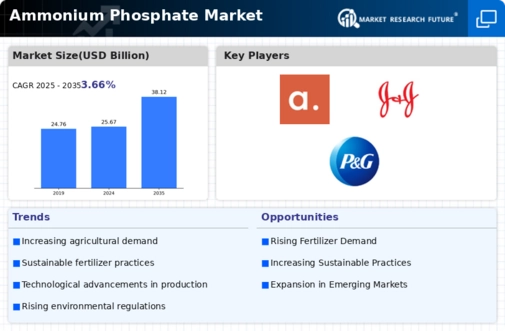Market Trends
Key Emerging Trends in the Ammonium Phosphate Market
The Ammonium Phosphate market has experienced notable trends in recent years, reflecting shifts in demand, production, and overall industry dynamics. One of the prominent trends shaping this market is the growing emphasis on sustainable agriculture practices. As awareness regarding environmental impact rises, farmers and agricultural professionals are seeking fertilizers that not only enhance crop yields but also minimize adverse effects on ecosystems. Ammonium Phosphate, known for its effectiveness as a fertilizer, has gained traction as it aligns with the sustainable agriculture trend by providing essential nutrients to plants while minimizing environmental concerns.
Moreover, the increasing global population and rising food demand are key drivers influencing the Ammonium Phosphate market. As the world population continues to grow, there is a corresponding need for higher food production. Ammonium Phosphate, with its rich nutrient content, is becoming a preferred choice for farmers aiming to optimize crop yields and meet the rising demand for food. This trend is particularly pronounced in regions where agriculture is a significant contributor to the economy, as farmers seek efficient and reliable fertilizers to improve productivity.
The Ammonium Phosphate market is also witnessing shifts in production techniques and technological advancements. Manufacturers are investing in research and development to enhance the production process and improve the quality of Ammonium Phosphate products. This includes innovations in nutrient composition, granulation methods, and overall product formulations. These advancements not only contribute to the efficiency of the fertilizer but also cater to specific crop and soil requirements, providing farmers with more tailored solutions for their agricultural needs.
On a global scale, trade dynamics play a crucial role in shaping the Ammonium Phosphate market trends. Changes in international trade policies, tariffs, and geopolitical factors can impact the supply chain and pricing of Ammonium Phosphate products. As countries seek to secure their food supply and reduce dependency on imports, the demand for domestically produced or regionally sourced Ammonium Phosphate may experience fluctuations. It is essential for industry players to stay abreast of these geopolitical developments to make informed decisions and adapt to evolving market conditions.
Environmental regulations are another significant factor influencing the Ammonium Phosphate market trends. Governments and regulatory bodies worldwide are increasingly focusing on sustainable agriculture and environmental protection. This has led to stricter guidelines and standards for the production and use of fertilizers, including Ammonium Phosphate. Market players are responding by developing eco-friendly formulations, exploring nutrient recovery technologies, and adopting practices that align with emerging environmental regulations.
The Ammonium Phosphate market is characterized by several notable trends that are reshaping the industry landscape. The emphasis on sustainable agriculture, driven by environmental awareness, is influencing product preferences among farmers. The rising global population and increased food demand are propelling the demand for efficient fertilizers like Ammonium Phosphate. Technological advancements, trade dynamics, and evolving environmental regulations further contribute to the dynamic nature of the Ammonium Phosphate market, requiring industry participants to stay adaptable and innovative in their approaches.






Leave a Comment